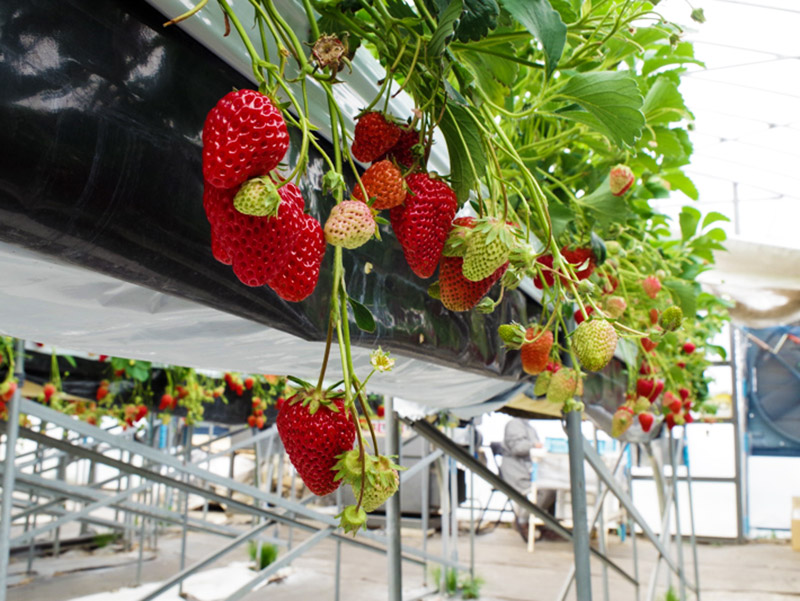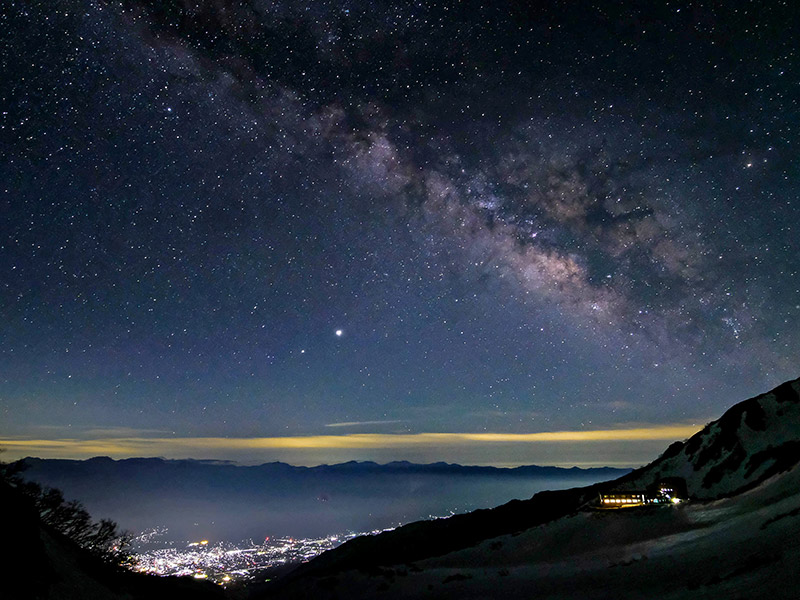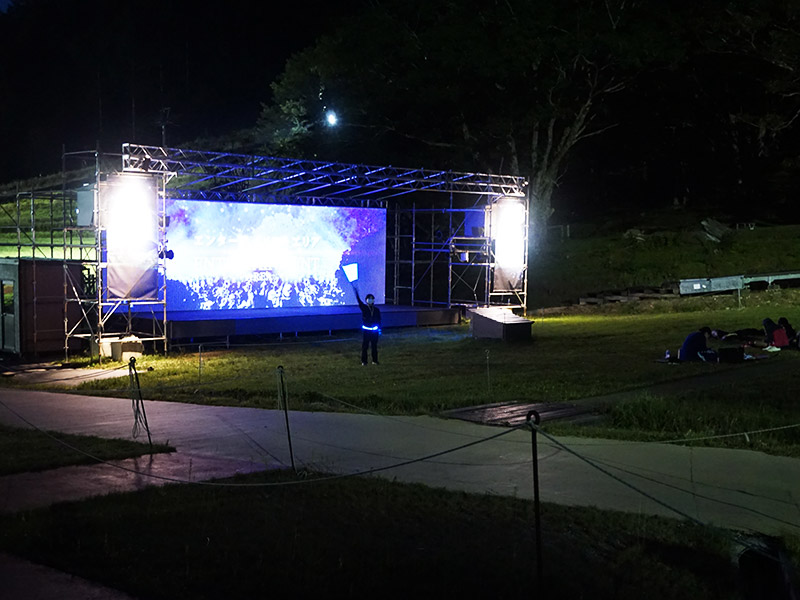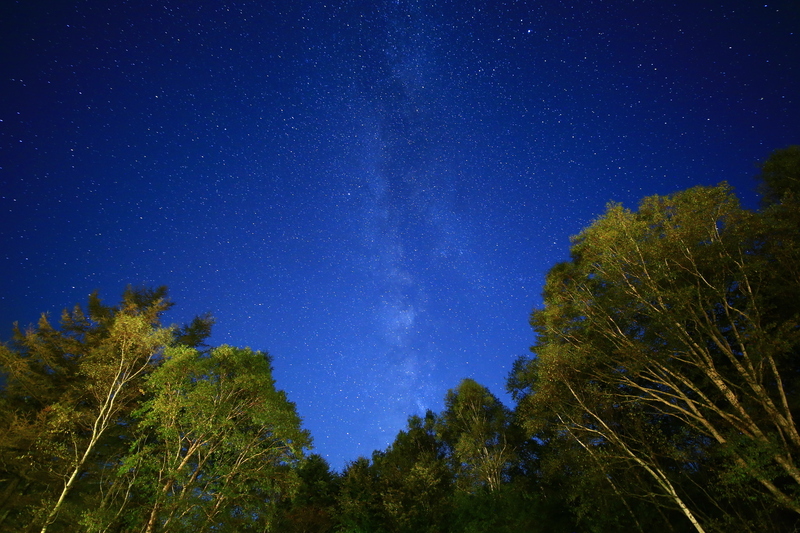A Starry Night Sky on the Roof of Japan
The best places to see unbeatable night skies in Nagano
Update:2021/11/17

When was the last time you looked up into the night sky?
For thousands of years, humans have been fascinated by the stars. As a species, we've spent countless nights looking to the heavens, creating stories, mapping constellations, and wondering where these twinkling lights come from. And while we now know so much more about the cosmos than we ever did before, many of us rarely take the time to appreciate its beauty for ourselves.
But that's not necessarily our own fault. These days, bright city lights shine 24/7 and blot out the stars. To see the cosmos as our ancestors saw it, we have to head to the great outdoors and away from the lights of the city.
In the Japanese Alps, also known as "The Roof of Japan," there are several spots at high altitudes perfect for stargazing and where no artificial lights reach. Among them, Star Village Achi and Senjojiki Cirque are some of the best Nagano has to offer.
Star Village Achi

©2012 Star Village Achi
Every year the Ministry of the Environment conducts an observation to measure the brightness of the night sky. In 2006 they recognized the night sky over Achi Village as the most beautiful starry sky in Japan. This was the start of the “Paradise in the Sky” tour, held nightly at Heavens Sonohara, located at an altitude of 1,400 meters, a short 15-minute gondola ride to the top. Originally a winter ski resort, Heavens Sonohara now offers year-round stargazing tours. The combination of its mountain-side location, easy access by the Fujimidai Kogen gondola from Achi Village, and being far away from any houses and streetlights made it the perfect place. In winter, in addition to the night sky, you can also enjoy skiing during the day.
Tour Experience

After arriving at the summit station, get ready to pick your stargazing spot. The lights turn off at 8:00 p.m. (8:30 p.m. in summer, 7:00 p.m. in winter), so your path is illuminated by the various lights they have set up.
The observation area has three areas: the Star Guide Area, Entertainment Area, and Heritage Area. The Star Guide Area, located in front of the summit station, with a guide who introduces the stars, constellations, and astronomical phenomena that you can see on any given day and will help your interest in the night sky grow. Walk for about a minute, and you will see the Entertainment Area with its large screen. Here, you can enjoy the combination of the starry sky, imagery, and music. A minute further on is the Heritage Area, where, for an extra fee, you can sit on a reclining chair or sofa and gaze at the stars.
Once you pick out your spot, lay down your groundsheet and wait for the countdown. If you have some extra time, you can take a stroll around the site to get some food and drinks at the store next to the gondola station. When it is time for lights-out, listen for the countdown: 10, 9, 8, ... 3, 2, 1! Cheers and shouts fill the darkness and are followed by several audible “Wows!” as countless stars spread out across the night sky and delight the crowd. The experience lasts about 30 minutes, and for many, this is the first time seeing the grandeur of the milky way—a moment that is hard to forget.

©2012 Star Village Achi
It is also good to keep in mind that it can be chilly depending on the time of year. Many people bring light sweaters, windbreakers, or blankets to fight the chill. At an altitude of 1,400m, it gets cold even in the summer. Blankets are available at the store, so don't worry if you forget one. Heavens Sonohara has a 60% rate of clear skies, and tours are held every night. On days when it is overcast or rainy, a projector is used to explain the constellations.
Collaboration with JAXA (Japan Aerospace Exploration Agency)

©2012 Star Village Achi
Achi Village also hosted a town meeting organized by the Japan Aerospace Exploration Agency (JAXA) in 2013. It was titled From Japan's Best Starry Village to Space and attended by about 300 residents of Achi Village. The JAXA town meeting serves as a forum for exchanging opinions and discussing space and aeronautics research and development with residents and is a perfect opportunity to learn about future space development. Similar town meetings were held around Japan with the hope of generating ideas and policies leading to future space development, scientific research, and aviation technology development. The tour staff don spacesuit-like outfits for the excitement of visitors, and JAXA goods and space food are on sale at the gift shop.
Daytime activities in Hirugami Onsen

Achi Village is well known throughout Japan for its stargazing, but tourists to Central Japan usually visit Achi Village to bathe in the hot springs of Hirugami Onsen, the hot spring of beauty known for its high-quality alkaline water. The alkaline spring water is popular among women as it gently dissolves oil and old skin cells on the skin's surface of the skin, making it feel silky smooth. It takes only one hour and thirty minutes by car from Nagoya, and three hours and thirty minutes from Tokyo and Osaka, so visiting the hot spring as a day trip is possible. However, enjoying both the hot spring of beauty and star gazing is recommended.
There are also daytime tourist attractions such as seasonal fruit picking, highland trekking, and skiing in winter. From summer to autumn, picking fruit like apples, muscat grapes, pears, and tomatoes direct from the field and eating them on the spot is another popular activity.

Mid-April to mid-May is the best time to see 10,000 beautiful flowering Hanamomo peach blossoms. The red, white, and pink flower arches along Route 256, which runs through the hot springs of Hirugami, are also known as the Hanamomo Kaido.

The Starry Skies of Senjojiki Cirque

All stargazing areas share one thing in common: few lights and pollutants in the air. Komagatake's Senjojiki Cirque, at an altitude of more than 2,600 meters above sea level and in an area with little light pollution, is where you can find the hotel closest to the sky in Japan, Hotel Senjojiki. It is a great place to stay and observe the starry sky in a relaxed atmosphere. The environment at Senjojiki Cirque is perfectly suited for stargazing year-round, but in winter, the chilly, dry air makes the sky even clearer. During the winter season, Hotel Senjojiki holds stargazing parties for guests, with commentary on the constellations by the guides.
In the middle of December or the beginning of January, when the sun rises over Mt. Fuji’s summit, you can see a phenomenon known as Diamond Fuji. This rare sight only occurs twice a year when the sunset and sunrise align perfectly with Mt. Fuji's summit. It is seen around the winter solstice when daylight hours are shortest (depending on the observation point). The sunrise over Mt. Fuji will take your breath away.

Daytime Activities at Senjojiki Cirque
Thousands of years have passed since glaciers carved the surface of the mountain into a semi-circular shape. In the summer, alpine plants bloom on Senjojiki Cirque, and when snow covers the area, it is used as a ski slope. And guests staying at the Hotel Senjojiki use the hotel as a base to enjoy activities like trekking, plant viewing, and winter activities in each of the four seasons.
Trekking, Skiing, and Snowshoeing at Senjojiki Cirque

The vast plateau of Senjojiki Cirque is one of the main attractions of the area. At these heights, it experiences the seasons slightly differently than the valley below, so you can enjoy snow in spring, cool breezes in summer, and early autumn colors.
And as long as the weather allows, you can go hiking, snowshoeing, or even skiing here. Snow covers the plateau until the end of May, and the warm spring weather makes such activities all the more enjoyable. After the snow melts, hikers climb the cirque and summit nearby peaks such as Mt. Hoken (2,931m) and Mt. Kisokoma (2,956m).

Mars Whiskey Distillery

At the foot of Senjojiki Cirque is the Mars Whiskey Distillery, the only whisky distillery in Nagano Prefecture. Their Mars Maltage 3 Plus 25 Aged 28 Years won the top prize in the blended malt whisky category of the World Whiskies Awards (WWA) 2013, sponsored by British Whisky Magazine. You can take a tour of the distillery and taste a variety of their whiskies in their newly renovated tasting room. Minami Shinshu beer, A local craft beer, is produced here as well.
Kozenji Temple

Kozenji Temple is another famous tourist attraction here. The grounds are surrounded by a forest of great cedars and home to superb examples of Buddhist architecture, including its imposing Sanmon gate, three-tiered pagoda, and main hall. The temple is also famous for its weeping cherry trees and luminous moss.
It is also home to the legend of Hayataro. As the legend goes, a wild dog lived at this temple and was known for its ability to drive off evil spirits. Its greatest act was exorcizing a monkey demon that terrorized a city in Shizuoka. Nowadays, you can purchase Hayataro-shaped talismans at the temple for protection.
Miharashi Farm

A short 30-minute drive from the foot of Senjojiki Cirque is Miharashi Farm. The farm offers a wide variety of activities that cater to parents and children: like picking grapes, apples, strawberries, and other fruit, as well as making soba noodles and jam by hand.
Conclusion
The Japanese Alps are home to many beautiful starry night views, such as Star Village Achi, with the best starry sky in Japan, and Hotel Senjojiki, the closest hotel to the starry skies in Japan. While you’re here, you can also enjoy hot springs, outdoor activities and, plenty of sightseeing.
These days, it’s easy to get caught up in everyday life. You wake up, work, eat, sleep and repeat. But every now and then, it’s important to take a breather, step back, and appreciate the world around you—whether it’s somewhere near, like the colorful flowers sprouting in the garden, or somewhere far, like the vast and mysterious galaxies of space.










